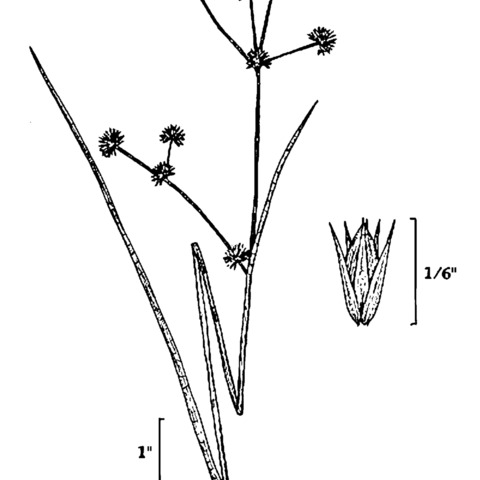Slender, 3–8 dm; lvs terete, septate, 1 mm thick; infl open, divaricately branched, the lower branches nearly horizontal; heads few–many, obpyramidal and 5-fld to hemispheric and 20-fld; fls eprophyllate; perianth and fr as in no. 26 [Juncus canadensis J. Gay, but smaller, the sep 1.9–3 mm, the pet 2.1–3.2 mm, the fr 3–3.6 mm; seeds fusiform, 0.7–1.2 mm, with a short appendage at each end. Swamps and wet shores; N.S. to Va. and in the mts. to n. Ga.; inland to O., W.Va., Tenn., and Mo.


